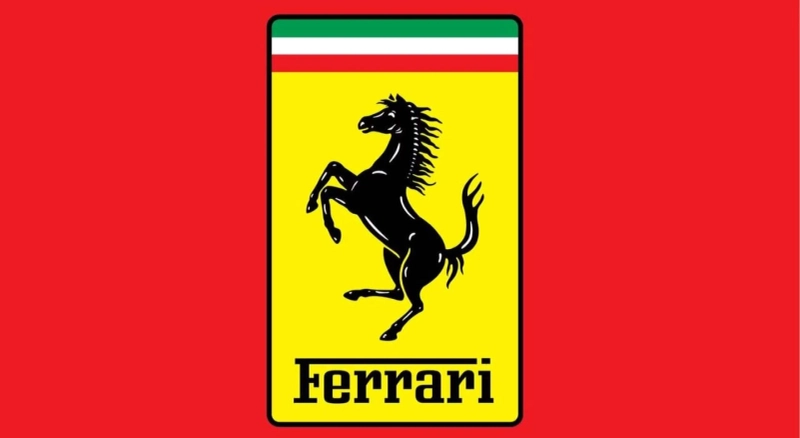Car symbols are much more than just visual representations of a brand—they are a reflection of a company’s legacy, values, and the ideals it stands for. Whether it’s the iconic prancing horse of Ferrari or the classic three-pointed star of Mercedes-Benz, car symbols serve as a powerful tool in conveying the essence of the brand. They connect with customers emotionally, becoming a statement of both aspiration and identity. Let’s explore how these symbols are intertwined with the brands they represent and how they reflect the values that make them iconic.
The Role of Car Symbols in Defining a Brand's Legacy
One of the most significant ways car symbols reflect a brand's legacy is through their deep connection to history and performance. For example, when you ask "what car has a horse logo?" the answer is Ferrari. The prancing horse represents more than just a logo; it is a tribute to the company’s founding roots in racing and its commitment to speed, power, and engineering excellence.
1. Historical Significance
A brand’s symbol often symbolizes an era in the company's history. The Ferrari prancing horse, for instance, has its origins in the Italian manufacturer's racing legacy, paying homage to the founder’s vision of creating high-performance cars for the racetrack.
By sporting such a symbol, Ferrari doesn’t just convey the car’s technical excellence but a connection to motorsport history. When customers see this symbol, they aren’t just buying a car; they’re embracing a legacy of success, passion, and unparalleled performance.
2. Evolving Legacy Through Design
Car symbols are also a representation of how a brand evolves over time. While brands like Mercedes-Benz and Audi have streamlined their logos for modern appeal, their symbols still maintain historical relevance. Mercedes-Benz’s three-pointed star, symbolizing land, sea, and air transportation, has withstood the test of time. Similarly, the Audi four rings represent the unification of four German automakers, showcasing the company’s history of collaboration and innovation.
These symbols often change in design over the years, becoming simpler and more modern while staying true to the brand’s roots. The evolution of car logos signifies a brand’s ability to innovate without losing touch with its past.
Car Symbols as a Representation of Brand Values
Car symbols reflect more than just a brand’s history—they also embody the values and aspirations of the company. Whether it’s luxury, reliability, performance, or sustainability, these symbols communicate what the brand stands for. Let’s break down how specific values are communicated through car symbols.
1. Performance and Power
The what car has a horse logo query highlights Ferrari, known for high performance and speed. The horse in motion symbolizes Ferrari’s relentless pursuit of speed, agility, and power. It’s no coincidence that the Ferrari logo is seen on the world’s most elite racetracks and is a status symbol for those who value performance above all else. Car enthusiasts who value speed, strength, and the thrill of the road are drawn to brands with symbols that reflect those very ideals.
Similarly, brands like Porsche and Lamborghini use their symbols to reinforce the power and performance embedded in their vehicles. Porsche’s crest, for instance, represents both luxury and high-performance engineering, while Lamborghini’s bull symbolizes strength and precision.
2. Luxury and Elegance
Symbols like the Mercedes-Benz star or the Rolls-Royce spirit of ecstasy represent the pinnacle of luxury and refinement. The three-pointed star is synonymous with German engineering and unrivaled sophistication, while Rolls-Royce’s iconic mascot, the "Spirit of Ecstasy," embodies elegance, grandeur, and timeless appeal. These symbols resonate with consumers who value not only the functionality of a car but also the status, comfort, and elegance that come with owning such vehicles.
3. Sustainability and Innovation
With the increasing focus on electric vehicles (EVs) and sustainability, many car manufacturers are updating their logos to emphasize innovation and eco-friendly values. Take Tesla, for example. The Tesla “T” logo combines sleek, modern design with cutting-edge technology to signify a future focused on sustainable energy solutions. Tesla’s logo speaks to the brand’s mission to revolutionize the automotive industry and lead the way toward a cleaner, more energy-efficient future.
In a similar vein, the Nissan Leaf symbol is used to reflect the company’s commitment to sustainable mobility and reducing carbon footprints.
Emotional Connection Through Car Symbols
Car logos aren’t just symbols—they’re an emotional connection to the brand’s values, legacy, and the lifestyle they represent. For example, Ferrari’s what car has a horse logo instantly connects consumers to the excitement of speed and the luxury of owning an exclusive car. These symbols evoke feelings of pride, exclusivity, and a sense of belonging to an elite group of individuals who share similar values and aspirations.
1. A Sense of Pride and Ownership
The car you drive says a lot about who you are. For Ferrari owners, displaying the prancing horse isn’t just about showcasing a luxury vehicle but about representing a rich legacy of racing success. The symbol of the horse, then, becomes a part of the owner’s identity—one that communicates success, speed, and exclusivity.
2. Brand Loyalty and Recognition
Car symbols also help create brand loyalty by making the brand instantly recognizable. When a person sees a prancing horse, they immediately recognize Ferrari’s identity without the need for words. This instant recognition is crucial in the automotive world, where customers often form emotional bonds with brands based on these symbols. It’s no surprise that consumers who own a particular car brand often feel a strong sense of loyalty, driven in part by the power and legacy of the brand’s symbol.
Conclusion
Car symbols are much more than just logos; they are a reflection of the brand’s history, values, and the emotional connection they foster with customers. Whether it’s Ferrari’s what car has a horse logo symbolizing performance and heritage or Tesla’s clean, modern logo reflecting innovation, each symbol tells a unique story.
These logos are carefully designed to inspire passion, build brand loyalty, and communicate the ideals that make these vehicles more than just machines—they make them symbols of power, luxury, and identity.



